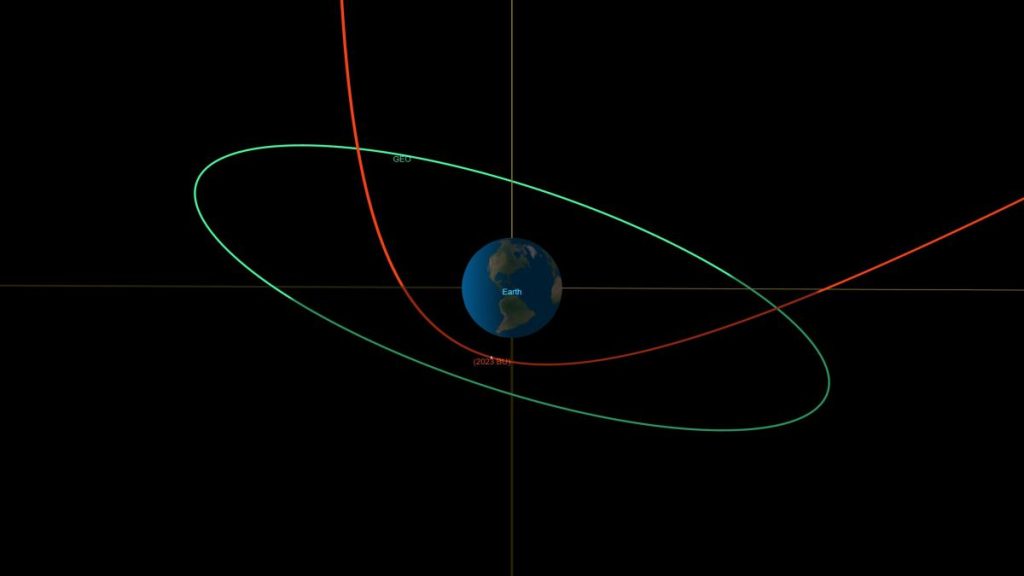A small but zippy asteroid will pass close to Earth on Thursday, not to be seen again until 2036.
Asteroid 2023 BU is only about 12 to 26.9 feet (3.7 to 8.2 meters) in diameter and was discovered less than a week ago on January 21 by amateur astronomer Gennadiy Borisov. According to The Virtual Telescope Project (opens in new tab), the asteroid will pass less than 6213.7 miles (10,000 kilometers) from Earth’s center, about a quarter of the distance between the planet and its man-made geostationary satellites, which orbit over the equator at the same speed and direction as Earth.
The asteroid is not classified as dangerous, both because its path will keep it from colliding with Earth and because it’s small enough that it would likely break up and incinerate in Earth’s atmosphere, according to NASA’s Jet Propulsion Laboratory (JPL). NASA JPL’s Scout impact hazard assessment system analyzed the asteroid data to confirm that 2023 BU will not hit the planet.
“Scout quickly ruled out 2023 BU as an impactor, but despite the very few observations, it was nonetheless able to predict that the asteroid would make an extraordinarily close approach with Earth,” Davide Farnocchia (opens in new tab), a navigation engineer at JPL who developed Scout, said in a statement (opens in new tab). “In fact, this is one of the closest approaches by a known near-Earth object ever recorded.”
Though the asteroid will pass close to the planet, it will still be a dim object in the sky, difficult to view without a high-powered telescope. However, the Virtual Telescope Project will livestream the flyby starting at 2:15 p.m. EST (1915 GMT) on Jan. 26. The feed will be available on the project’s website and YouTube channel (opens in new tab). The asteroid will be closest to Earth at 7:27 p.m. EST (2127 GMT) that day. At that point, it will be about 2,200 miles (3,600 kilometers) above the planet’s surface, according to NASA.
According to JPL, the little asteroid once orbited the sun every 359 days. But its close encounter with Earth will change its path. Deflected by Earth’s gravity, the asteroid’s orbit will elongate so that it will take 425 days to go around the sun on future orbits.
Asteroid 2023 BU is what is known as an ‘Apollo’ asteroid, an asteroid whose path takes it across Earth’s orbit but on a more extended path than our own planet’s. The next close approach to Earth, according to Space.com (opens in new tab), will take place on Dec. 6, 2036.
Correction: An earlier version of this article said the asteroid’s closest approach will be at 4:27 p.m. EST, rather than 4:27 p.m. PST (7:27 EST). This has been corrected.

